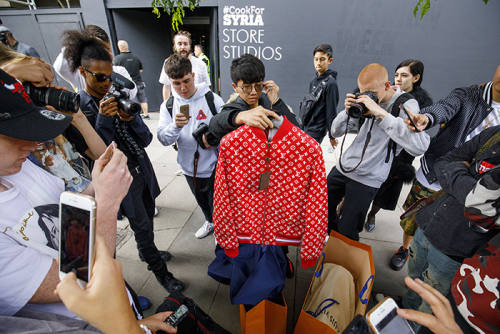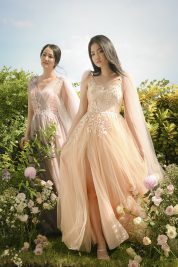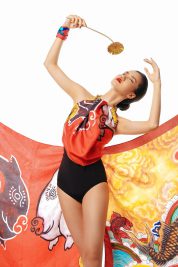SPORT LUXE: HAND SHOCKING EMPIRE WITH SPORT
If in the past, mixing biker shorts with an expensive Louis Vuitton shirt on the street would attract many curious and curious eyes, in 2021, the situation has reversed…
Handshake is beneficial for both parties
The value of the sportswear market is predicted to reach $231.7 billion by 2024, a promised land that everyone wants to set foot in, especially luxury fashion houses. Sports brands cannot stand idly by, allowing high-end fashion brands to profit on their own strengths. The big names in the sports industry are also quick to catch up with the trend when collaborating with leading luxury fashion houses such as Louis Vuitton, Comme des Garçons or Alexander Wang. They choose a win-win partnership instead of touching luxury goods territory. The most successful and proudest collaboration in the sportswear world is Adidas’ Y-3 with Yohji Yamamoto. The brand embodies the dynamic and modern spirit of Adidas, while embodying Yohji Yamamoto’s unique avant-garde. In addition to Y-3, Adidas also successfully collaborated with Rick Owens. Before this craze, other brands also continuously collaborated with designers and launched special sneakers such as Puma combined with Hussein Chalayan and Alexander McQueen, Nike combined with Undercover and Comme des Garcons, or Adidas in association with Raf Simons. Every time a collaborative project is revealed, the “hypebeast” world stands still, proving how influential and popular these sports shoes are.

Popular deals
Sportswear and luxury goods first hit the streets in 1998 when Jil Sander invited Adidas to collaborate on a co-creation project. Since that deal, luxury brands have started eyeing the shape and vibrant culture of sportswear. The most successful and proudest collaboration in the sportswear world is Adidas’ Y-3 with Yohji Yamamoto. The brand embodies the dynamic and modern spirit of Adidas, while embodying Yohji Yamamoto’s unique avant-garde. In addition to Y-3, Adidas also successfully collaborated with Rick Owens. Before this craze, other brands also continuously collaborated with designers and launched special sneakers such as Puma combined with Hussein Chalayan and Alexander McQueen, Nike combined with Undercover and Comme des Garcons, or Adidas in association with Raf Simons. Every time a collaborative project is revealed, the “hypebeast” world stands still, proving how influential and popular these sports shoes are.
Limited collabs bearing the names of two famous brands quickly sold out in just a few hours of opening
Consumers feel extremely excited about the new youthful and dynamic image in high fashion. Gosha Rubchinskiy and Demna Gvasalia from Vetements are two typical names that bring popular logos like Adidas, Fila and Champion to the same level as Fendi or Balenciaga. Even Fendi also took advantage of the rise of the “Logomania” trend when collaborating with Fila. Most recently, Prada’s first collaboration project with Adidas; Dior Men with brand for skaters Stussy or with Jordan. Or the interesting combination of Gucci’s chic style with outdoor wear – The North Face.




Many argue that the rise of sports style is contributing to reversing the concept of class, and democratizing fashion. According to Hypebeast’s Street Fashion Impact Report 2021, 72% of young people say sneakers are the biggest spenders in their wardrobe. While luxury goods hit fashion, using the item to speak for the value of the wearer, sports brands nurture a connection with consumers through collections that are bold and strongly focused on equipment. design for individuals.
Who would spend $20,000 on a pair of sneakers?
It is predicted that Generation Z and millennials will be the main customers of the luxury market
The customer group that generates huge annual revenue for luxury brands does not contribute much to the success of expensive sportswear. The market is shifting to a slice of the pie with far more potential than the “digital generation.” According to new research by management and consulting firm Bain & Company, Generation Z and millennials will account for 45% of spending in remote markets. global luxury by 2025. It is the young residents who were born and raised in the age of the “Hype” culture; live mainly on social networks, exaggerating the “limited edition” products that are launched with the version. drip limit; has caused fever in the value of fashion items.
This is a great opportunity for many brands; but at the same time it is also a significant challenge; because Millennials think and shop differently than previous generations. Affordable young consumers looking for a breakthrough; catching up with the trend, making them look “cooler”. This is where strategists need to shake hands.
Post: Nhu Tong














